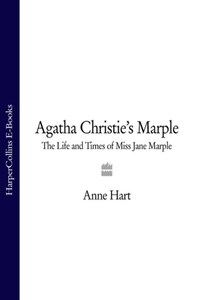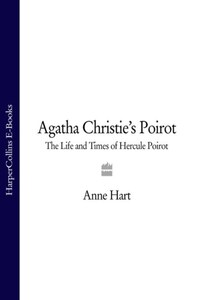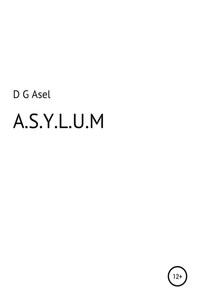Cover
Title Page
Dedication
Preface
1 St Mary Mead
2 Miss Marple’s Earlier Life
3 Miss Marple’s Career Begins
4 The 1930s
5 Postwar Events
6 The Four Last Cases
7 The Essential Miss Marple
8 A Visit to Miss Marple
9 Miss Marple at Home
10 Miss Marple at Large
11 ‘My Nephew, the Author’ and Other Relatives and Friends
12 Little Maids All In a Row
13 Miss Marple as Sleuth
A Miss Marple Bibliography
Miss Marple Short Stories
Miss Marple Films, TV and Radio
References
Acknowledgments
Keep Reading
About the Author
Other Works
Copyright
About the Publisher
It has been a great pleasure to write this biography of Agatha Christie’s beloved and resilient Miss Marple, the best known of a notable group of women who have played leading roles in detective fiction. Of course, not a word of this book would have been written had not a benevolent genius created Miss Marple in the first place, and I am immensely grateful to Rosalind Hicks, Agatha Christie’s daughter, for giving her kind approval for my use of her mother’s writing in this way.
Unlike other biographers, I cannot claim to have unearthed new material. Everything we know of Miss Marple is contained in the twelve books and twenty short stories devoted to her remarkable sleuthing. To search through these books and stories, not for murderers but for clues to Miss Marple herself, is the aim of this biography. I hope its readers will enjoy reading it as much as I have enjoyed writing it. Together we are indebted to the incomparable Agatha Christie.
I am grateful to a number of people who have encouraged me along the way. I would particularly like to thank Susan Hart, Nancy Grenville, David Grenville, and Percy Janes for their helpful advice on the manuscript, and June Mescia, my editor, for her suggestions and good judgment.
ANNE HART
For me, as for many others, the reading of detective stories is an addiction like tobacco or alcohol … the story must conform to certain formulas (I find it very difficult, for example, to read one that is not set in rural England).
—W. H. Auden, ‘The Guilty Vicarage’
‘Give me a nice cup of tea, Aunt Jane, with some thin bread and butter and soothe me with your earliest remembrances of St Mary Mead.’
—Inspector Craddock, THE MIRROR CRACK’D FROM SIDE TO SIDE
The pretty village of St Mary Mead will be forever known as the home of Miss Jane Marple, that wonderful sleuth whose creator so cleverly, and for so many years, led us down the garden path. It is impossible, indeed, to imagine St Mary Mead without Miss Marple or Miss Marple without St Mary Mead; it was the archetypal English village created just for her. That for almost fifty years its pleasant homes and byways were so frequently the scenes of crimes has never detracted in the least from its essential cosiness and charm. Before fully introducing Miss Marple, it is first necessary to introduce St Mary Mead.
St Mary Mead lies in the home county of Downshire (occasionally called Radfordshire) and is about twenty-five miles south of London and twelve miles equidistant from Market Basing and the coast at Loomouth.* Danemouth, a fashionable watering place also on the coast, is about eighteen miles from the county town of Much Benham and it, in turn, is two miles from St Mary Mead.†
Of its history and the origins of its name we know nothing. It is true that a well-known archaeologist once came down to St Mary Mead to excavate an ancient barrow in the grounds of Old Hall, but the subsequent discovery that he was merely an impostor out to steal Colonel Protheroe’s Georgian trencher salts and Charles the Second tazza appears to have ended a brief flurry of interest in village antiquities. A concern for local history cannot be found listed as an activity in St Mary Mead; day-to-day affairs and distractions seem to have left its inhabitants with little time to greet tourists or dwell on any but the most recent events.
An interesting map of St Mary Mead is to be found in that useful early guide, The Murder at the Vicarage. A few additions – principally signposts to Gossington Hall and Much Benham, and an indication of the new Development – have been added to bring the geography of the village up to date. As can be seen from this map, St Mary Mead is a small village whose shops and houses straggle comfortably along the High Street from the Railway Station at one end to the Blue Boar at the other. Three houses, including the vicarage, face on to a side road, and in this area are several footpaths and lanes leading to and from the neighbouring woods and fields. Old Hall, one of the two ‘big houses’ of St Mary Mead, can be approached by one of these. The other big house, Gossington Hall, lies about a mile and a quarter along the Lansham Road to the northeast. To reach it one passes a new building estate boasting a flourish of half-timbered, sham Tudor houses rejoicing in ‘distorted rustic’ gates and names such as ‘Chatsworth’. This new building estate, laid out in the late 1920s, should not be confused with the more plebeian Development, whose many houses and television masts sprang up in the early 1960s, obliterating the pleasant meadows where Fanner Giles’s cows once used to graze.









